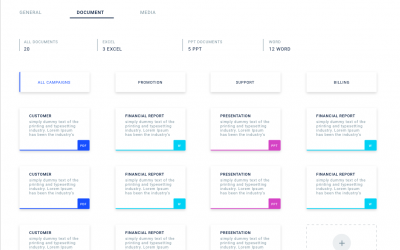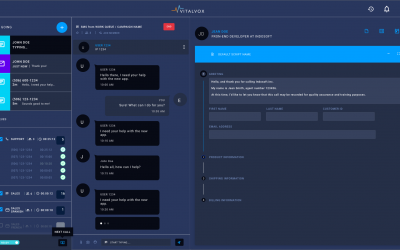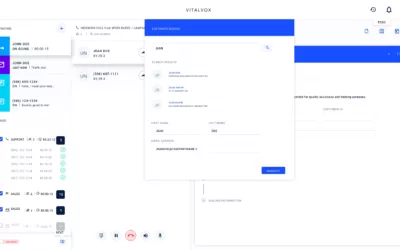Launching new software can be an exciting yet challenging endeavor. This Smooth Deployment Strategies Guide offers essential steps to ensure a seamless rollout and peak performance for your new systems. By focusing on these key strategies, you can boost efficiency, minimize errors, and set up your team for a successful software launch from day one.
1. Effective Pre-Deployment Planning
A successful software deployment always begins with a well-documented and detailed plan. Therefore, outlining deployment goals, timelines, key stakeholders, and potential challenges early on sets the foundation for a smooth deployment process.
- Risk Assessment and Mitigation: First, identify potential risks and create solutions for them. Typical risks might include system downtime, data loss, or compatibility issues, all of which need preventive measures to ensure smooth deployment.
- Stakeholder Communication: Additionally, make sure each department understands the deployment’s scope and their roles. Early communication prevents confusion and aligns all parties, essential for smooth deployment success.
2. Testing in Controlled Environments for Smooth Deployment
Before full-scale rollout, rigorous testing in a controlled environment is essential to ensure software behaves as expected without impacting actual users. Testing thoroughly improves deployment performance while preventing interruptions.
- Staging Environment Setup: It’s crucial to replicate your live environment in a staging setup that mirrors real-world conditions. Testing in this environment verifies that systems operate smoothly once deployed.
- Comprehensive Testing Scenarios: Conduct a range of tests—including unit, integration, and performance testing—to validate various aspects of functionality. Covering multiple scenarios ensures smooth deployment by preparing the system for real conditions.
3. Automated Deployment and Rollback Systems
Automation minimizes human error and speeds up the deployment process significantly. Automated tools handle repetitive tasks more efficiently and maintain consistency, which is essential for a smooth deployment.
- CI/CD Pipeline: Continuous Integration/Continuous Deployment (CI/CD) pipelines are crucial in streamlining deployments by automating code integration and application updates, ultimately ensuring smooth deployment.
- Rollback Capabilities: Additionally, a rollback plan is critical to quickly revert to a previous version if issues arise. Automated rollback systems enable swift recovery, reducing downtime and ensuring system performance.
4. Performance Monitoring and Optimization for Successful Deployment
Once software is live, tracking performance is vital to ensure it meets user expectations. Effective monitoring tools provide insights into system behavior and potential bottlenecks, which support optimal performance post-deployment.
- Real-Time Monitoring: Tools offering real-time insights into metrics like system load, response times, and error rates are invaluable. Immediate access to data allows teams to respond quickly to issues, ensuring smooth deployment success.
- Resource Allocation: By adjusting resources like CPU, memory, and storage based on live data, teams can proactively optimize system performance. This proactive optimization keeps systems running smoothly under changing demands.
5. User Training and Support Systems for Smooth User Adoption
Even the best software can fall short if users are unprepared. Therefore, training and accessible support systems boost user confidence and maximize software adoption, reinforcing the impact of smooth deployment.
- Training Sessions: Hands-on sessions tailored to different user groups help users feel comfortable with the new software’s functionalities.
- 24/7 Support Channels: Furthermore, setting up reliable support channels ensures users can reach out with questions or concerns, improving overall satisfaction and reinforcing the success of the deployment.
6. Gradual Rollout and Feedback Loops
Deploying software gradually, or in waves, reduces the impact of issues and provides valuable feedback from initial users, which further refines the deployment.
- Phased Rollout Strategy: Begin with a small user group, monitor their experience, and resolve issues before a wider release. This approach lowers the risk of disruptions and supports a smoother deployment.
- Continuous Feedback Collection: Using surveys or in-app feedback forms to gather early user input helps refine the software, ensuring an improved user experience and smoother deployments moving forward.
7. Post-Deployment Review and Future Adjustments
After deployment, reviewing each step of the process and outcomes is key for ensuring ongoing improvement and readiness for future releases.
- Performance Audits: Conduct a detailed analysis of system performance to confirm it meets all specified requirements. Regular audits ensure optimal system performance.
- Team Debriefing: Finally, hold a meeting with the deployment team to discuss successes, challenges, and lessons learned. Reflecting on each deployment informs best practices for future projects, ensuring smooth and successful rollouts.
Conclusion and Next Steps
By following this Smooth Deployment Strategies Guide, your team can approach deployment with confidence. Thorough planning, automation, and stakeholder involvement ensure a smooth and successful launch. Additionally, performance monitoring and feedback loops maintain system efficiency, setting a strong foundation for future deployments.
Contact Us for Expert Assistance!
Ready to deploy new software but want expert support to ensure it’s seamless? Our experienced team is here to help you plan, implement, and optimize every step of the deployment process. Contact us today to learn how we can support your success!



